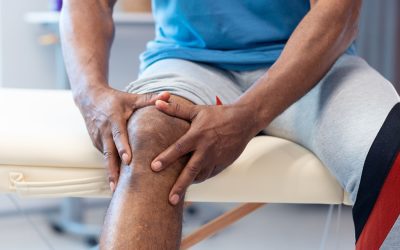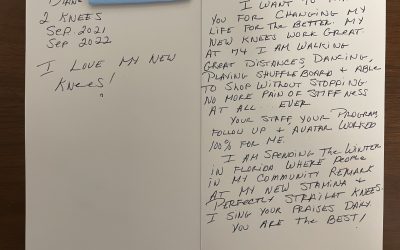The Ream and Run is a partial shoulder replacement that includes reshaping the worn shoulder socket which is often eroded by the arthritic process. It is suitable for a subset of patients with advanced shoulder arthritis whose age and activity level pose a long term risk of failure of the socket implant – the weak link in total shoulder replacement. Pioneered by Dr. Matsen, at the University of Washington, this operation has proven a successful alternative to total shoulder replacement when performed properly in appropriately selected patients. Dr. Parsons performed his shoulder fellowship with Dr. Matsen and learned firsthand the principles and techniques of the Ream and Run. This top 10 list will review some key things about this procedure.
- It is essential to create a single smooth concavity for the humeral head articulate against. Many arthritis shoulders develop a “biconcave glenoid” from erosion. This allows the humeral head to sit on the back edge of the socket and wear a second concavity that results in posterior tilt of the socket relative to the shoulder blade. Surface preparation of the glenoid using burrs and custom reamers can restore a single concavity.
- The curvature of this concavity must nearly match that of the humeral implant selected that best restores the patients humeral anatomy. This requires custom-made reamers with different diameters of curvature that is usually 2-3mm greater than each head diameter for the system used. This “mismatch” allows some play at the joint surface without sacrificing the congruence of the mating surfaces. Too much mismatch would allow load concentration over a smaller surface area and too little might overly constrain the joint.
- The humeral head prosthesis must be recentered in this single smooth concavity. This requires soft tissue balancing techniques and proper humeral implant placement. The goal is to avoid recurrent edge loading of the back of the socket. Restoring external rotation range of motion is key to this, and this involves complete release of the subscapularis tendon at the time of surgery along with proper postoperative physical therapy.
- The hard bone that makes up the surface of the socket must be preserved. This is also known as subchondral bone. Surface preparation of the socket must avoid penetrating the subchondral bone. This requires that correction of socket wear be carefully titrated to achieve the above goals without overcorrection. Violation of the subchondral plate can lead to socket sided wear and pain after surgery.
- The largest humeral head size should be used so long as it does not overstuff the joint or overhang the boundaries of the native humeral head. Larger heads provide greater stability and more optimal load transfer but this must be balanced against the risk of stiffness that too large a head can cause.
- Rehabilitation is critical to the outcomes of the ream and run. Stiffness results in pain, and it is essential that patient regain optimal range of motion after surgery. This requires dedication on the part of the patient and experience on the part of therapists. Establishing goals prior to surgery is helpful and there is no substitute for hard work.
- It takes longer to recover from a Ream and Run compared to a normal total shoulder. Some of this may be based on the preoperative status of the shoulder. In addition, regaining cuff strength and mobility can be more uncomfortable when the glenoid is not resurfaced. There is also a mold process that occurs as the humeral implant articulates against the subchondral bone and this process of remodeling may cause some discomfort. Patients need to understand this fact before they elect to undergo the ream and run so that they have appropriate expectations for the recovery.
- In addition to motivation, grit and determination are key. These are generally marked by a positive outlook in the face of adversity. Patients prone to depression or a negative outlook may not be appropriate for this operation. Persistence is key over the long-term.
- Some level of mild persistent discomfort can be a very fair trade for an unrestricted activity level with no risk of glenoid implant failure. Patients expecting 100% pain relief may again not be suitable candidates for this operation. Patients who are willing to accept a substantial improvement in pain and function to return to a high level of activity without risking damage to the replacement may be quite happy.
- Failures of the ream and run tend to occur within the first 6 -18 months after surgery and is usually associated with glenoid sided pain. A principle reason for this is residual stiffness and weakness which is why persistence with rehabilitation is key to success. In the authors personal experience, patients who make it past 2 years have lasting results that seldom deteriorate over time provided they maintain a strong and mobile shoulder.














